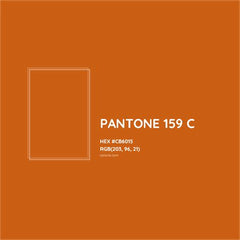Your cart is empty now.

Office action text of Trademark BOLIDO - Likelihood of Confusion rejection example
Office action text of Trademark BOLIDO - Likelihood of Confusion rejection example
This is the an office action example for a trademark BOLIDO that was found to have a likelihood of confusion with another trademark METEOR.
SECTION 2(d) REFUSAL – LIKELIHOOD OF CONFUSION
Registration of the applied-for mark BOLIDO is refused because of a likelihood of confusion with the mark METEOR in U.S. Registration No. 5109381. Trademark Act Section 2(d), 15 U.S.C. §1052(d); see TMEP §§1207.01 et seq. See the attached registration.
The response is here.
Trademark Act Section 2(d) bars registration of an applied-for mark that so resembles a registered mark that it is likely a consumer would be confused, mistaken, or deceived as to the source of the goods and/or services of the applicant and registrant(s). See 15 U.S.C. §1052(d). Determining likelihood of confusion is made on a case-by-case basis by applying the factors set forth in In re E. I. du Pont de Nemours & Co., 476 F.2d 1357, 1361, 177 USPQ 563, 567 (C.C.P.A. 1973). In re i.am.symbolic, llc, 866 F.3d 1315, 1322, 123 USPQ2d 1744, 1747 (Fed. Cir. 2017). However, “[n]ot all of the [du Pont] factors are relevant to every case, and only factors of significance to the particular mark need be considered.” Coach Servs., Inc. v. Triumph Learning LLC, 668 F.3d 1356, 1366, 101 USPQ2d 1713, 1719 (Fed. Cir. 2012) (quoting In re Mighty Leaf Tea, 601. F.3d 1342, 1346, 94 USPQ2d 1257, 1259 (Fed. Cir 2010)). The USPTO may focus its analysis “on dispositive factors, such as similarity of the marks and relatedness of the goods [and/or services].” In re i.am.symbolic, llc, 866 F.3d at 1322, 123 USPQ2d at 1747 (quoting Herbko Int’l, Inc. v. Kappa Books, Inc., 308 F.3d 1156, 1164-65, 64 USPQ2d 1375, 1380 (Fed. Cir. 2002)); see TMEP §1207.01.
Under the doctrine of foreign equivalents, a mark in a common, modern foreign language and a mark that is its English equivalent may be held confusingly similar. TMEP §1207.01(b)(vi); see, e.g., In re Aquamar, Inc., 115 USPQ2d 1122, 1127-28 (TTAB 2015); In re Thomas, 79 USPQ2d 1021, 1025 (TTAB 2006). Consequently, marks comprised of foreign wording are translated into English to determine similarity in meaning and connotation with English word marks. See Palm Bay Imps., Inc. v. Veuve Clicquot Ponsardin Maison Fondee en 1772, 396 F.3d 1369, 1377, 73 USPQ2d 1689, 1696 (Fed. Cir. 2005). Equivalence in meaning and connotation may be sufficient to find such marks confusingly similar. See In re Aquamar, Inc., 115 USPQ2d at 1127-28; In re Thomas, 79 USPQ2d at 1025.
The applicant’s mark is in Spanish, which is a common, modern language in the United States. See In re Aquamar, Inc., 115 USPQ2d 1122. The doctrine is applied when “the ordinary American purchaser” would “stop and translate” the foreign term into its English equivalent. Palm Bay, 396 F.3d at 1377, 73 USPQ2d at 1696 (quoting In re Pan Tex Hotel Corp., 190 USPQ 109, 110 (TTAB 1976)); TMEP §1207.01(b)(vi)(A). The ordinary American purchaser includes those proficient in the foreign language. In re Spirits Int’l, N.V., 563 F.3d 1347, 1352, 90 USPQ2d 1489, 1492 (Fed. Cir. 2009); see In re Thomas, 79 USPQ2d at 1024.
In this case, the ordinary American purchaser would likely stop and translate the mark because the Spanish language is a common, modern language spoken by an appreciable number of consumers in the United States.
Similarity of the Marks
In the present case, the applicant’s mark is BOLIDO, and the registrant’s mark is METEOR. The applicant has translated the term BOLIDO as METEOR. As stated above, under the doctrine of foreign equivalents, a mark in a common, modern foreign language and a mark that is its English equivalent may be held confusingly similar.
Similarity of the Goods/Services
The registration covers:
Precious stones; cut diamonds; jewellery, excluding watches, containing cut diamonds.
The applicant seeks registration in relation to:
Jewelry, precious and semi-precious stones; timepieces and chronometric instruments.
.
When analyzing an applicant’s and registrant’s goods for similarity and relatedness, that determination is based on the description of the goods stated in the application and registration at issue, not on extrinsic evidence of actual use. See Stone Lion Capital Partners, LP v. Lion Capital LLP, 746 F.3d 1317, 1323, 110 USPQ2d 1157, 1162 (Fed. Cir. 2014) (quoting Octocom Sys. Inc. v. Hous. Computers Servs. Inc., 918 F.2d 937, 942, 16 USPQ2d 1783, 1787 (Fed. Cir. 1990)).
Absent restrictions in an application and/or registration, the identified goods are presumed to travel in the same channels of trade to the same class of purchasers. In re Viterra Inc., 671 F.3d 1358, 1362, 101 USPQ2d 1905, 1908 (Fed. Cir. 2012) (quoting Hewlett-Packard Co. v. Packard Press, Inc., 281 F.3d 1261, 1268, 62 USPQ2d 1001, 1005 (Fed. Cir. 2002)). Additionally, unrestricted and broad identifications are presumed to encompass all goods of the type described. See, e.g., Sw. Mgmt., Inc. v. Ocinomled, Ltd., 115 USPQ2d 1007, 1025 (TTAB 2015); In re N.A.D., Inc., 57 USPQ2d 1872, 1874 (TTAB 2000).
In this case, the identifications set forth in the application and registration(s) are identical and have no restrictions as to nature, type, channels of trade, or classes of purchasers. Therefore, it is presumed that these goods travel in all normal channels of trade, and are available to the same class of purchasers. See Midwestern Pet Foods, Inc. v. Societe des Produits Nestle S.A., 685 F.3d 1046, 1053, 103 USPQ2d 1435, 1440 (Fed. Cir. 2012). Accordingly, the goods of applicant and the registrant(s) are considered related for purposes of the likelihood of confusion analysis.
The overriding concern is not only to prevent buyer confusion as to the source of the goods, but to protect the registrant from adverse commercial impact due to use of a similar mark by a newcomer. See In re Shell Oil Co., 992 F.2d 1204, 1208, 26 USPQ2d 1687, 1690 (Fed. Cir. 1993). Therefore, any doubt regarding a likelihood of confusion determination is resolved in favor of the registrant. TMEP §1207.01(d)(i); see Hewlett-Packard Co. v. Packard Press, Inc., 281 F.3d 1261, 1265, 62 USPQ2d 1001, 1003 (Fed. Cir. 2002); In re Hyper Shoppes (Ohio), Inc., 837 F.2d 463, 464-65, 6 USPQ2d 1025, 1026 (Fed. Cir. 1988).
Please note the additional grounds for refusal.
SECTION 2(e)(1) DESCRIPTIVENESS REFUSAL
Registration is also refused because the applied-for mark merely describes a quality or characteristic of applicant’s goods. Trademark Act Section 2(e)(1), 15 U.S.C. §1052(e)(1); see TMEP §§1209.01(b), 1209.03 et seq.
A mark is merely descriptive if it describes an ingredient, quality, characteristic, function, feature, purpose, or use of an applicant’s goods and/or services. TMEP §1209.01(b); see, e.g., In re TriVita, Inc., 783 F.3d 872, 874, 114 USPQ2d 1574, 1575 (Fed. Cir. 2015) (quoting In re Oppedahl & Larson LLP, 373 F.3d 1171, 1173, 71 USPQ2d 1370, 1371 (Fed. Cir. 2004)); In re Steelbuilding.com, 415 F.3d 1293, 1297, 75 USPQ2d 1420, 1421 (Fed. Cir. 2005) (citing Estate of P.D. Beckwith, Inc. v. Comm’r of Patents, 252 U.S. 538, 543 (1920)).
In the present case, the applicant seeks to register the term “BOLIDO” for “Jewelry, precious and semi-precious stones; timepieces and chronometric instruments.” The applicant has defined the term “bolido” as the Spanish language equivalent of the English term “meteorite.” Some meteorites are considered gemstones, as such they are commonly used in jewelry. https://www.gemrockauctions.com/learn/did-you-know/space-stones-gems-that-originated-in-outer-space. https://www.arkadiancollection.com/gemstone-directory/moldavite; https://www.jtv.com/library/gemopedia/meteorite. Please see attached Exhibits A, B and C. The applicant’s attention is directed to Exhibit D which displays several watches with meteorite dials. https://www.hautetime.com/six-superb-watches-with-meteorite-dials/80421/.
The foreign equivalent of a merely descriptive English term is also merely descriptive. In re N. Paper Mills, 64 F.2d 998, 998, 17 USPQ 492, 493 (C.C.P.A. 1933); In re Highlights for Children, Inc., 118 USPQ2d 1268, 1270 (TTAB 2016) (quoting In re Optica Int’l, 196 USPQ 775, 777 (TTAB 1977)). Under the doctrine of foreign equivalents, marks with foreign terms from common, modern languages are translated into English to determine descriptiveness. Palm Bay Imps., Inc. v. Veuve Clicquot Ponsardin Maison Fondee en 1772, 396 F.3d 1369, 1377, 73 USPQ2d 1689, 1696 (Fed. Cir. 2005) (citing In re Sarkli, Ltd., 721 F.2d 353, 354, 220 USPQ 111, 113 (Fed. Cir. 1983); In re Am. Safety Razor Co., 2 USPQ2d 1459, 1460 (TTAB 1987)); see TMEP §1209.03(g).
Descriptiveness is not determined in the abstract, but in relation to the goods or services for which registration is sought and the possible significance that the term may have to the average purchaser of the goods or services because of the manner of its use. See In re Bright-Crest, Ltd., 204 USPQ 591, 593 (TTAB 1979). See also, In re Consolidated Cigar Co., 35 USPQ2d 1290 (TTAB 1995); and In re Pennzoil Products Co., 20 USPQ2d 1753 (TTAB 1991).
The question is not whether someone presented with only the mark could guess what the goods/services are. Rather, the question is whether someone who knows what the goods/services are will understand the mark to convey information about them. See In re Home Builders Association of Greenville, 18 USPQ2d 1313 (TTAB 1990).



